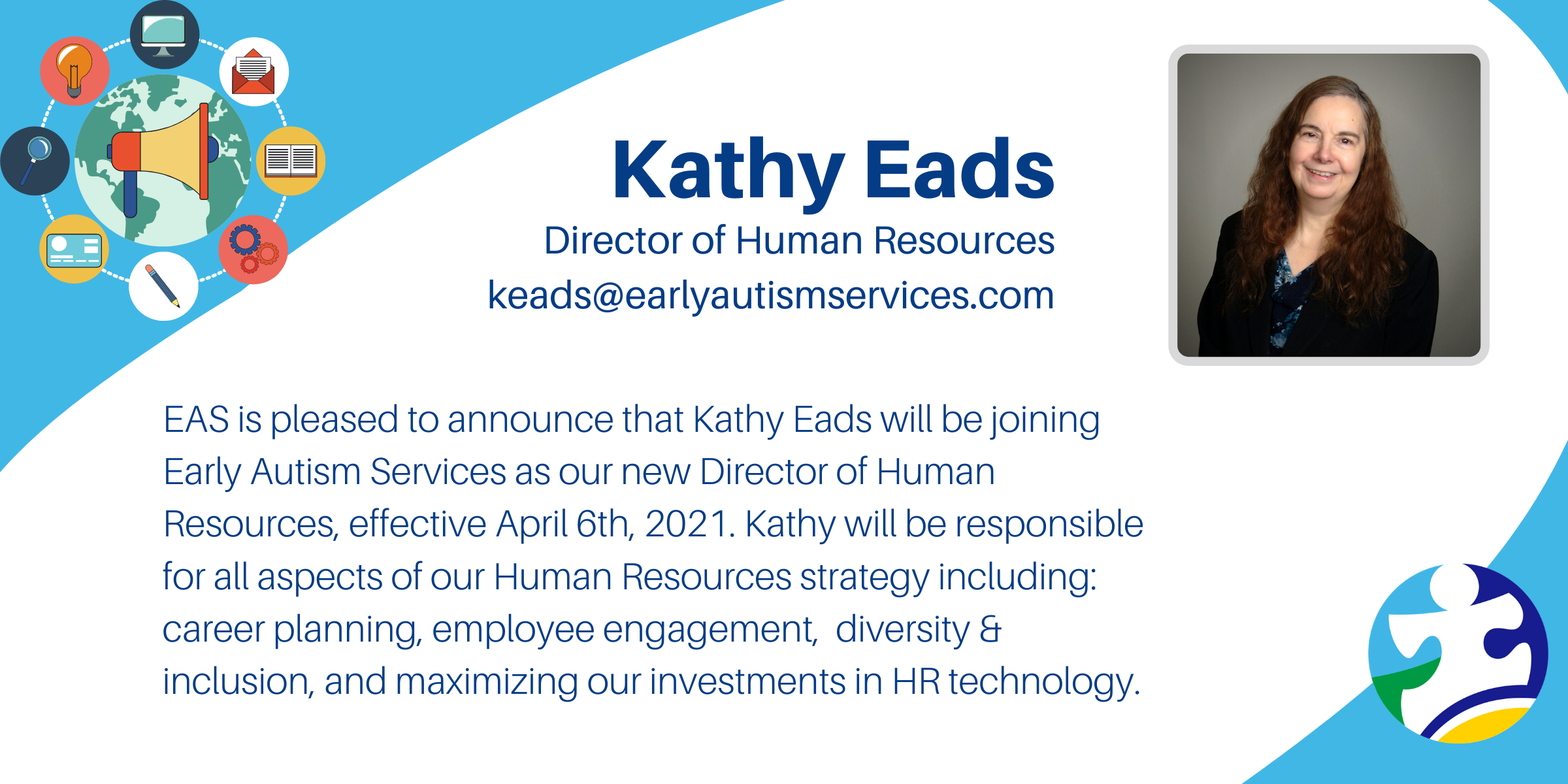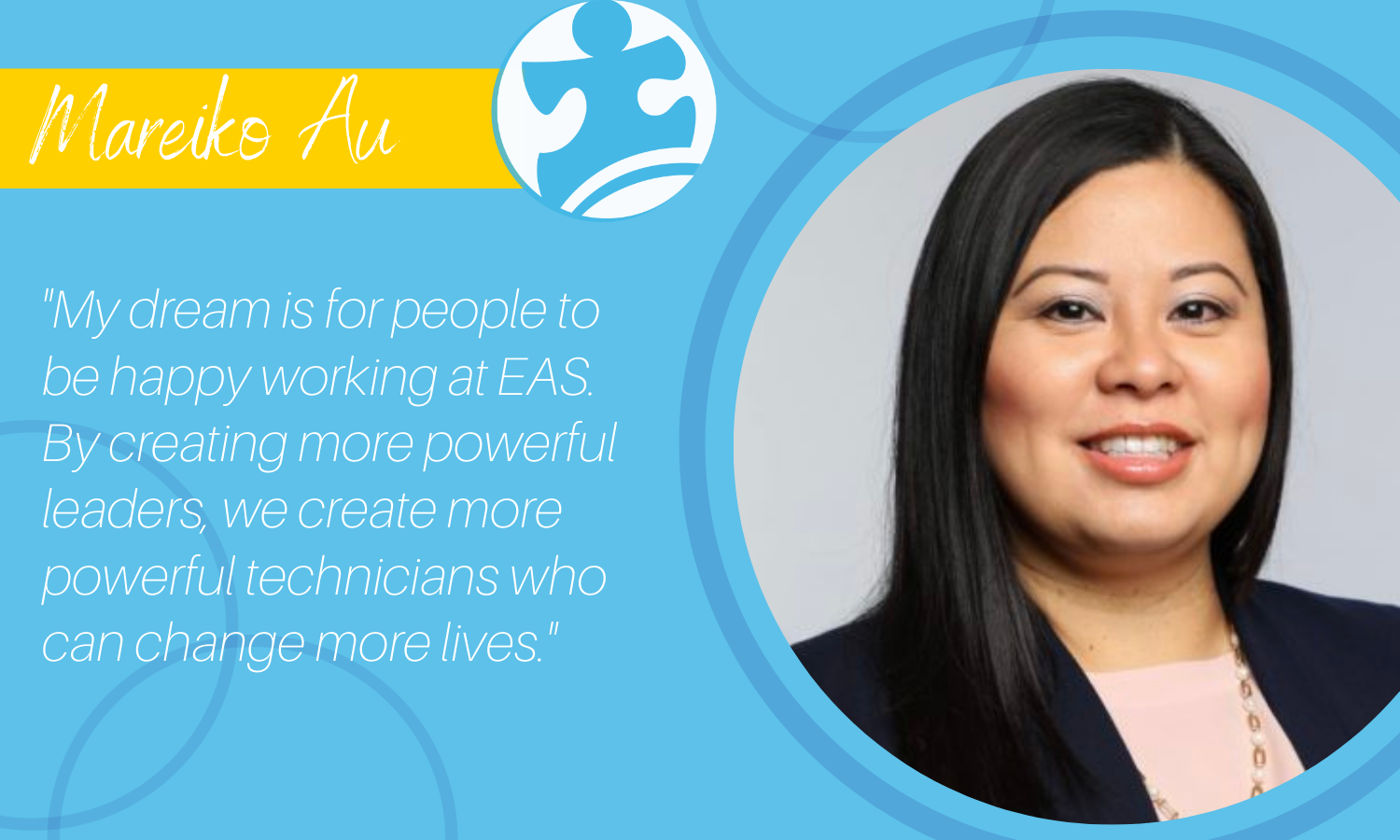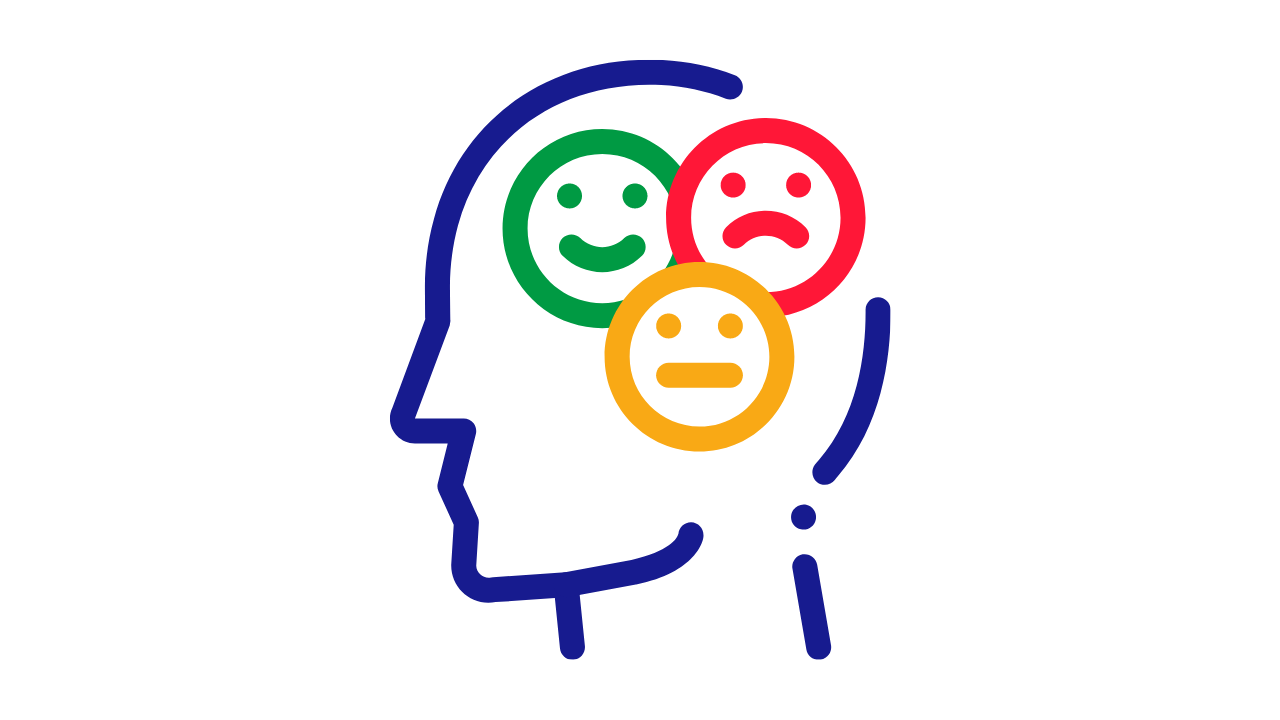

Kathy Eads | Director of Human Resources


Kathy Eads | Director of Human Resources

“My dream is for people to be happy working at EAS…By creating more powerful leaders, we create more powerful technicians who can change more lives.”
Mareiko is a Board Certified Behavior Analyst with a Master of Arts in Teaching with a Specialization in Applied Behavior Analysis and a Bachelors of Arts in Psychology.

Journey
As I sit and reflect on the journey that got me here, I can definitely say that it has been a great honor to share my passion with many of you. If I was ever sure of anything throughout my life, it is that I wanted to empower children and work with people to become the best version of themselves. I definitely went through many job experiences before calling EAS “home”. Upon finding my job at Early Autism Services, I was very specific about what I wanted in my next “job” and it was to work somewhere that cared about what they did and about the people who worked there. I came from California, where there were as many ABA companies as there were McDonald’s. I didn’t want that. I wanted to be happy, I wanted to make a difference and I didn’t want to be a number. What did that mean for me to be happy at my job? Well, that meant that I received the proper training, proper support and I made an impact in a child’s life.
I remember my interview as vividly as I remember my first day of training. In my interview, I asked “what makes you stand out from other ABA agencies?”. The answer was simple, “We care about what we do and we care about how we do it”. Sounds simple, but in practice, easy to lose sight of.
My first day of training was intense, very detailed and very specific about how we conducted ABA therapy, you could actually feel the passion in the intensity of my trainer. She wanted me to be great. As I met more people in this company, many had this same passion for being the best. I wanted to be better because everyone around me was so wonderful at their job, so I kept raising the bar for myself. How could I teach a skill better? How could I train better and how could I lead better? How could I keep my teams, families and clients happy? In every position as I worked my way up, I always asked those questions. It brought me joy to teach a kid a word, or to catch a ball, or ride a bike. It also brought me joy to teach a technician to teach better or really become independent in the way they learned to acclimate to different learners. I was thrilled to watch technicians become leaders and eventually BCBA’s leading teams. It motivated me to empower them. By creating more powerful leaders, we created more powerful technicians who could change more lives and bring more kids into care.
When I left my clinical role I thought it would leave a huge void in my heart, but I quickly found that my “why” stayed the same, but on a different level. I still asked the same questions, but they were tailored towards things like how to create efficiencies on an organizational level and how to remove barriers so that everyone is working towards the same cause. My positions may have changed over the years, but my “why” remains the same: to work with people to reach their potential – potential beyond what they may even see that they are capable of.
Vision
In a recent interview, I was asked “what is your dream for the company?”. I had the simplest answer, for people to be happy working here. While that sounds so cliché, it isn’t an easy thing to achieve. This simple concept requires not just one person, but many people to work together to create this. Even the best leaders can’t simply conjure happiness, we must all work together to create it. There is an African proverb that says “If you want to run fast, run alone. If you want to run far, run together”. In this day, there are a lot of ABA providers for people to choose from. We can’t just say we are the best, we need to prove it, and for us to really ensure we are relevant years from now, we need to “run together”. As I step into the CEO position, I ask that we work together creating not only the best versions of ourselves and each other, but work at creating a company that we can all be proud to work for. It is in raising the bar for ourselves, that we continue to raise the bar for the children we service.
– Mareiko


EAS Story Time: Snowmen at Night: A fun read along story about snowmen that includes themes about understanding and identifying emotions. This story is a great book for children with autism who are learning about emotions.
Book Description: “Have you ever built a snowman and discovered the next day that his grin has gotten a little crooked, or his tree-branch arms have moved? And you’ve wondered, “What do snowmen do at night?” Witty, imaginative verse offers many amusing details about the secret life of snowmen. An entertaining read-aloud for bedtime sharing or winter storytimes.
This delightful wintertime tale reveals all! Caralyn Buehner’s witty, imaginative verse offers many amusing details about the secret life of snowmen and where they go at night, while Mark Buehner’s roly-poly snowmen are bursting with personality and charm. From the highly successful team that created such winning titles as Fanny’s Dream, Snowmen at Night is fabulous, frosty, and fun!”
Jessica Goldberg | Autism Parent & Behavior Therapist/Outreach Specialist
Early Autism Services

Learning to identify and regulate emotions can be very challenging, especially for young children on the autism spectrum. While emotions can feel overwhelming, there are tools that can help your child learn to identify, and regulate, their emotions.
Using fun books and videos to identify facial expressions and label emotions is a fun way to teach your child to, eventually, label their own emotions.
Here is a fun example video you can watch with your child where we read a story called “Snowmen at Night”. Using the illustrations in the book, we point out different expressions and emotions: EAS Story Time: Snowmen at Night
Another way you can help your child learn to identify and manage emotions is using Zones of Regulation. Identifying facial expressions can be challenging for some individuals with autism, so Zones of Regulation teaches emotions in the form of colors. Once kids learn what behaviors and emotions fall under each color, they start learning how other people feel when they are in certain zones.
There are 4 colors: Blue, Green, Yellow, and Red. (This section will have photos)
Blue Zone means you’re tired, bored, not quite ready to work, etc.
Green Zone means you’re calm, relaxed, ready for the day, eager to learn, etc.
Yellow Zone means maybe you’re annoyed, getting frustrated, or maybe starting to feel a little out of control, but not quite there yet
Red Zone means you’re out of control, furious, terrified or devastated

Imagine your child is upset after losing a game of monopoly with his friend. He’s frustrated and starting to lose control. He stops talking to his friend and stomps away. This would be the “yellow zone”. Using the zones approach, consider asking your child, “How do you think your behaviors are making your friend feel?” “What kinds of things are they thinking?” “What might they say to you?” These kinds of questions teach a child how their behaviors affect others. Soon after, they’re learning about appropriate responses to different events in their lives. Some problems are really big, but some are really small. Red Zone responses may be appropriate for huge problems, but they aren’t appropriate for tiny problems. Zones of Regulation focuses the rest of the curriculum on teaching appropriate replacement behaviors in the form of coping strategies. There are tons of different strategies, from breathing exercises to physical activity to requesting breaks.
Ultimately Zones of Regulation can be a great tool for teaching emotional regulation to your child. If you’d like some help in teaching the Zones to your child, reach out to your child’s BCBA. They can assess your child’s needs and build an individualized program for them. If your child does not currently have a BCBA, and you’d like to speak with a clinician, please give our team a call to schedule a free consultation.
Heather Snodgrass | Board Certified Behavior Analyst
Early Autism Services
Jessica Goldberg | Autism Parent & Behavior Therapist/Outreach Specialist
Early Autism Services


Two ways to find items your child likes include:
Learning new skills can help any kid get through their day to day life.

If you suspect your child might need a diagnosis to receive extra support and services, it is important to receive proper therapies ASAP. You will soon find yourself stalled by waiting-lists upon waiting-lists.
Getting through the wait list as quickly as possible is your goal!
Tips on obtaining a quick diagnosis:
Another method on getting through the wait list:
If you would like to find out more about the services that EAS offers, please visit our website at earlyautismservices.com or call (312) 965-2997.

Going to the Doctor: Getting my child with a disability through the office successfully
No one likes doctor visits! It can be a scary place for children, especially those with a disability, or those that cannot understand verbal language quite well.
Before going to the doctor’s office:
At the doctor’s office:
Make sure the doctor or nurse physically gives it to the child. This can start a great child-doctor relationship! Your child will learn the doctor is a pretty cool person.
*** For Immediate Release ***
St. Louis, MO – Comprehensive Early Autism Services has formally updated its business name to Early Autism Services. In addition the organization has released a new company logo which is displayed below.
Early Autism Services will continue to provide Applied Behavior Analysis (ABA) Therapy for children with autism and their families, but will move forward with this new branding.
“We are passionate about each of the children and families that we work with, and we were ready for an image that shared our energy and passion for the work we do and the families we serve,” said Adam Kuda, Marketing Director at Early Autism Services.
Early Autism Services opened nearly a decade ago in Chicago, IL, and now the organization works with children in more than 10 states in the US and also has operations in Canada and Australia.
# # #
For questions please contact:
Adam Kuda – Marketing Director
akuda@earlyautismservices.com

Autism, or Autism Spectrum Disorder (ASD), refers to a broad range of conditions that often bring challenges related to: social skills, speech, and behavior. For many parents, trying to understand and manage their child’s behaviors can be difficult. One of the biggest challenges is trying to create a consistent structure for handling situations when their child is acting out. Additionally, having a consistent way to reinforce positive behaviors is often overlooked.
Below is an example of a method parents can use effectively when trying to address certain behaviors of their child, both positive and negative.
When a child is told to go somewhere – like a chair or facing a wall, alone for a determined amount of time.
Reinforcing positive behaviors through praise or attention.
At EAS, we build individualized Applied Behavior Analysis (ABA) therapy programs which help address behavior planning, as well as: social skills, fine motor skills, language and communication, play skills, self help, and more. If you would like to speak with a clinician to set up a time to see discuss building a personalized program for your child, please click on the link below.
Recent Comments